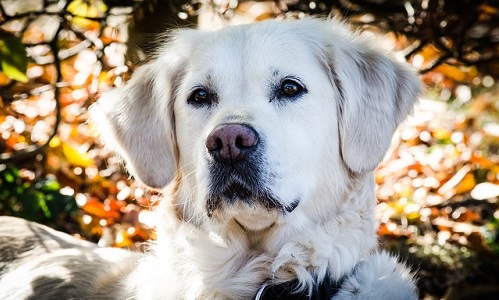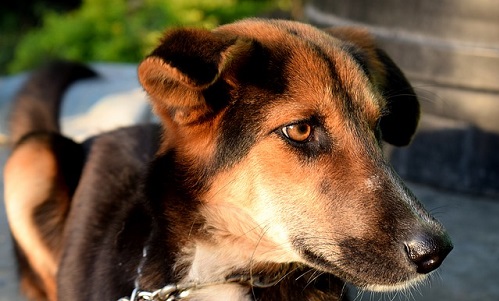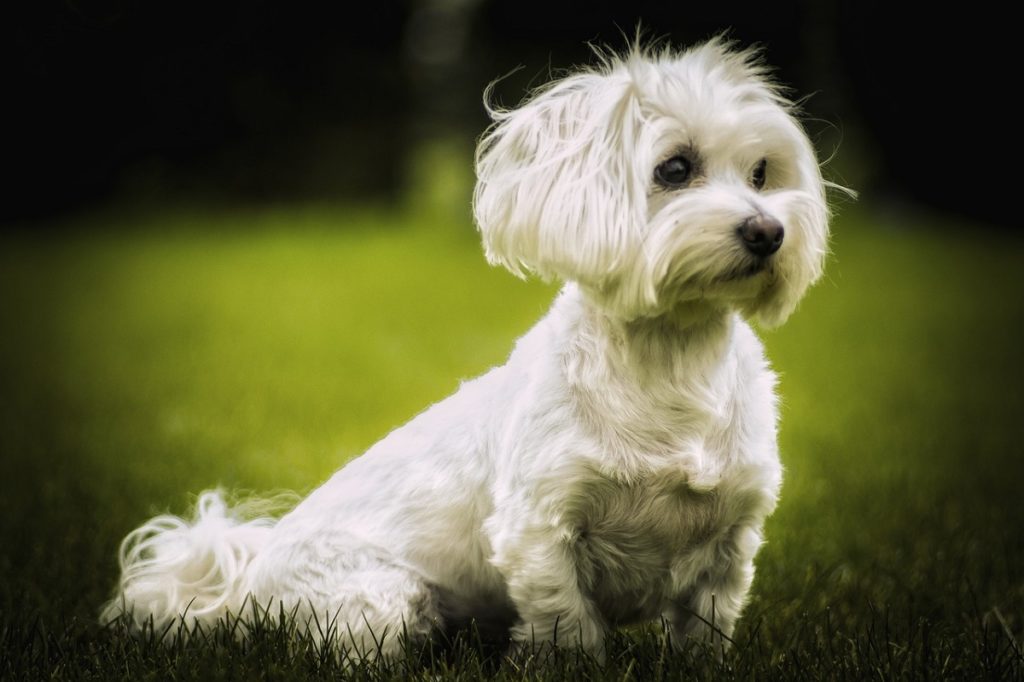Dogs are our beloved family members, and many dog owners think of their canine companions almost as children, treating them with the same loving care. If you’re one of those big-hearted dog lovers, you know that even a small injury to your poor pup can make you wince with sympathy – and start searching for answers to provide your fur baby with much-needed pain relief. This article will discuss how to treat a scab on a dog, as well as explore the different causes for wounds, abrasions and other canine skin conditions your dog may be suffering from.
Why Do Dogs Get Scabs?
Imagine you’re petting your pup and you feel something bumpy on his skin – and touching it might even elicit a yelp. Your dog has a scab, but you’re unsure why – he could have gotten it virtually anywhere. Before you panic, let’s take a look at some common reasons why your dog may have developed a scab:
- Roughhousing with other pets
- Walking through sharp underbrush
- Environmental allergies or sensitivities
- Parasites like fleas and ticks
- Nervous habits (e.g., excessive licking /biting themselves)
Scabs on a dog, much like scabs on a human being, are one of the first signs that the body is doing all it can to heal itself from an injury. They act as a sort of ‘natural bandage’, keeping dirt and moisture out of the vulnerable healing wound. These features are particularly important in a dog, because they aren’t always able to immobilize an injured area by themselves.
While we might use a crutch or put an arm in a sling, most dogs need all four paws and the use of their whole body to balance and move properly. Consequently, this can lead to more opportunities for a bad step or an unusual movement to crack open a scab and expose the wound to bacteria and infection. Add this to the fact that dogs are closer to the ground (and all the dirt that comes with it), and even a small wound can become a big problem. Seeing a scab on your dog means you have an excellent opportunity to do something about the underlying cause and safeguard your pet’s health.
Canine Scabs: How To Encourage Healing
If you’ve ever had dry skin or healing scratches, you know that it’s no picnic – the area might sting or throb, and worst of all, it usually itches, too. This is because the scab is helping pull together skin, and the rest of your body puts a lot of tension on that skin, making it uncomfortable. It’s a natural reflex of the body to touch a pain or scratch an itch for relief, but as humans, we know that will negatively affect the healing process – so we can restrain ourselves (for the most part).
Now imagine the sort of tension an active dog can put on that same skin, and how itchy it must be to have tufts of fur in the middle of it all! Dogs operate on a lot more instinct, and have much less inherent self-control than their human companions. That means that the chance of them scratching themselves into a scab – and hurting themselves scratching it back off – is pretty high.
A dog with a scab may attempt to:
- Bite the scab off or away, especially when healing is beginning
- Lick the scab off or away, particularly if they’re unsupervised
- Scratch the scab with their paws, both standing and lying down
- Rub up against walls, furniture, and even you to scratch the scab
 If your dog has a scab, it’s best to keep him away from other pets, children, and very energetic activities until they’re healed up. After all, you don’t want to find yourself back at square one with an impatient, bleeding dog – besides the prolonged healing time and discomfort, a scab that doesn’t heal fully leaves your dog prone to infection (we’ll get to that matter in a moment).
If your dog has a scab, it’s best to keep him away from other pets, children, and very energetic activities until they’re healed up. After all, you don’t want to find yourself back at square one with an impatient, bleeding dog – besides the prolonged healing time and discomfort, a scab that doesn’t heal fully leaves your dog prone to infection (we’ll get to that matter in a moment).
Wound Care for Dogs: Things You Should Know
Scabs are a painful and confusing ailment for your dog, so make sure that you’re being patient with them. While it may be challenging when they’re threatening to leave blood spots on your carpet or upholstery through obsessive grooming, just remember – they’re relying on you to help patch themselves up and shed those itchy scabs for good. Keeping this in mind, here are several important things you should be aware of when dealing with a scab on your dog:
- Don’t pull the scab off: Many of us are guilty of wiggling a loose tooth or pulling at a hangnail when we shouldn’t – we want to remove the odd texture off our body, so we’re driven to pick, scratch, and pull it away. However, don’t let those bad habits manifest on your dog: they have that scab for a reason, and pulling it off before it’s intended to fall off may re-open a wound and cause them more pain.
- Not all medicines are good ones: While there are a few ‘human’ medicines that can be given to dogs under the supervision and direction of a vet, most should be stored safely out of reach. Just because you aren’t mixing a medicine into your pup’s food or water doesn’t mean it won’t get into their system – dogs naturally lick their skin and fur to clean it, and that means they’ll likely wind up ingesting anything you put on their skin. Keep that skin cream for yourself!
- Let the scab breathe: You’ve probably heard the same advice from a loved one when you were dutifully bandaging your own wound in Band-Aid after Band-Aid at some point. The same principles hold true for your dog: their skin needs airflow to stay healthy and help dry out any dampness from the wound (such as oozing, blood, or pus). While it’s appropriate to loosely cover the wound with dry, clean gauze to prevent environmental germs from getting in, make sure to give your pooch’s skin time to air out, too.
- Now is not the time to hunt for “unique” home remedies: Dry skin, some indigestion, a little sluggishness – a bit of apple cider vinegar in your pup’s water might help for these ailments, but for wounds bad enough to cause a scab, stick to mainstream treatments and take your pup to the vet for large scabs. Even if you’re sure you know the cause of those scabs, you might be mistaken – they could be a sign of a more serious canine ailment that can be stopped if diagnosed early enough. As is the case for any health condition concerning your pet, always consult your veterinarian for a professional diagnosis if your dog shows signs of scabs that won’t heal on their own.
- Your dog will likely be just fine: It’s completely understandable to be worried if your pet isn’t feeling well, but bear in mind that dogs are very hardy on the whole. Many times, the way the fur grows around and through a scab will make it appear a lot worse than it actually is, so if your pet is acting fine, eating, drinking, and eliminating, just keep an eye on him and let your dog’s body heal itself.
Preventing Infection: Parasites & Bacteria
Unfortunately, some other members of the animal kingdom can see an open wound or a partially-removed scab as an invitation to hurt your dog: it’s a nasty, unpleasant reality, but the truth is that parasites are always looking for a way into a host. Your dog, particularly if he spends time outdoors, is a prime target for these opportunistic invasions. Examine your dog’s scab – and the underlying wound, if the scab is accidentally pulled off or away – and make sure there are no visible dirt, debris, or insects in the wound.
 Botfly larvae, found mostly during the summer months in warm areas of the United States and around the world, are particularly insidious. The small, circular wound of a botfly bite may look like it is slowly healing, but a white dot in the center is a tell-tale sign that your poor pup is infected with larvae and must go to the vet’s immediately for removal. Many owners miss the “red flags” of spotting botfly larvae because they assume that a scab peeling off means that everything is healing the way it should. Thankfully, these types of infestations are relatively rare in dogs that are well-kept and frequently groomed, but their stories never fail to elicit shudders from worried dog parents.
Botfly larvae, found mostly during the summer months in warm areas of the United States and around the world, are particularly insidious. The small, circular wound of a botfly bite may look like it is slowly healing, but a white dot in the center is a tell-tale sign that your poor pup is infected with larvae and must go to the vet’s immediately for removal. Many owners miss the “red flags” of spotting botfly larvae because they assume that a scab peeling off means that everything is healing the way it should. Thankfully, these types of infestations are relatively rare in dogs that are well-kept and frequently groomed, but their stories never fail to elicit shudders from worried dog parents.
Another nuisance – bacteria – may also try to make an appearance. If you’ve taken your dog to a vet and received antibiotics for their healing process, be diligent about administering their medication. Be vigilant in watching your dog’s wound – if the edges of the scab ever get redder, puffier, discolored, or warm, contact your vet immediately to avoid a canine bacterial infection or worsening condition. Your vet may prescribe both oral and topical antibiotics for your dog to keep bacteria at bay.
Water Therapy: A Natural Treatment For Your Dog’s Wounds
Keeping your dog’s scabs clean can help expedite the healing process, and water is a great, safe way to aid in your dog’s therapy. As a general rule, you don’t want to absolutely saturate scabs with water; instead, spray or dab water around the edges and the driest parts of the scab to give your dog some dry skin relief. Dog-safe moisturizers can be used in moderation, such as applying a thin layer of coconut oil. Coconut oil is a great all-natural option, since it’s not only a safe treatment (i.e., it’s ok if your dog ingests it), but it also offers his skin some pliability and moisture to prevent the painful ‘pulling’ sensation of a healing scab.
Here are some other helpful tips to consider while treating your dog’s wounds:
- Clean materials: Ideally, you should try to protect your dog and yourself from fluids and bacteria by wearing disposable gloves when treating any open or potentially open wound. If you know that your dog is allergic to latex, opt for nitrile gloves instead. Make sure that any water you’re using is as clean as possible – filtered at the faucet or bought as distilled water at the store.
- Moderate temperature: If it feels very hot or very cold against the inside of your wrist, it’s going to be uncomfortable for your dog as well. Stick to cool or lukewarm water for moistening scabs or flushing wounds to avoid shocking or hurting your furry friend.
- Compresses: Clean, dry cotton cloths work well for pressing gently against wounds to moisten scabs and surrounding skin or dabbing blood away from open wounds. These cloths are easy to wash and bleach once your pup has recovered.
- A calm environment: If your dog usually fights you at bath time, you should expect the same resistance when cleaning up their scabs or wounds with water. Enlist the help of a friend or family member to pet and soothe your dog as you clean their wounds, ready to lend some gentle restraint when necessary.
- An easy source of water: This may be a hose, an irrigation-specific healthcare bottle, or even the handheld sprayer from your shower – you’re going to have enough of a challenge keeping your dog still, and a bucket or cup is just going to complicate matters if they start getting antsy.
- After-wash care: Once you’re done keeping the skin around the wound moist and pliable, you’ll need to dry off the skin gently to remove excess water. Keep a clean towel in arms’ reach, as well as any vet-prescribed topical medication you may need to apply. Your dog may be eager to get out of the “line of fire” as far as water is concerned, and you don’t want to have to hunt for these items.
Summary
 Your dog may not understand that you’re trying to help (and may try very hard to get out the door or out of the tub), but stay patient and calm: they take their behavioral cues from you. If he sees that you aren’t worried and you take the time to move slowly and deliberately, they won’t have a chance to get “spooked.” Talk in a constant, soothing voice and pet your dog rhythmically to reassure him – and a treat or two afterwards wouldn’t hurt, either!
Your dog may not understand that you’re trying to help (and may try very hard to get out the door or out of the tub), but stay patient and calm: they take their behavioral cues from you. If he sees that you aren’t worried and you take the time to move slowly and deliberately, they won’t have a chance to get “spooked.” Talk in a constant, soothing voice and pet your dog rhythmically to reassure him – and a treat or two afterwards wouldn’t hurt, either!
Scabs are an inevitability of canine life and play, particularly if your dog is young, active, frequently spends time outdoors, or enjoys playing with other animals. As a dog parent, you’re probably far more worried about their scabs then they are. Just use these tips and tricks to help your dog heal from his scab and he’ll be back chasing toys and playing in no time!
Sources:
- Dobias, DVM, Dr. Peter. “5 Most Common Mistakes People Make When Treating Skin Wounds And Incisions.” Dr. Dobias Natural Healing (peterdobias.com), January 6, 2017, https://peterdobias.com/blogs/blog/75484677-5-most-common-mistakes-people-make-when-treating-skin-wounds-and-incisions. Accessed November 27, 2018.
- “How to Clean a Dog’s Scab.” Wag! (wagwalking.com), (no publish date), https://wagwalking.com/grooming/clean-a-dogs-scab. Accessed November 27, 2018.
- “Healing Scabs on Dogs.” Vetinfo.com, (no publish date), https://www.vetinfo.com/healing-scabs-on-dogs.html. Accessed November 27, 2018.




